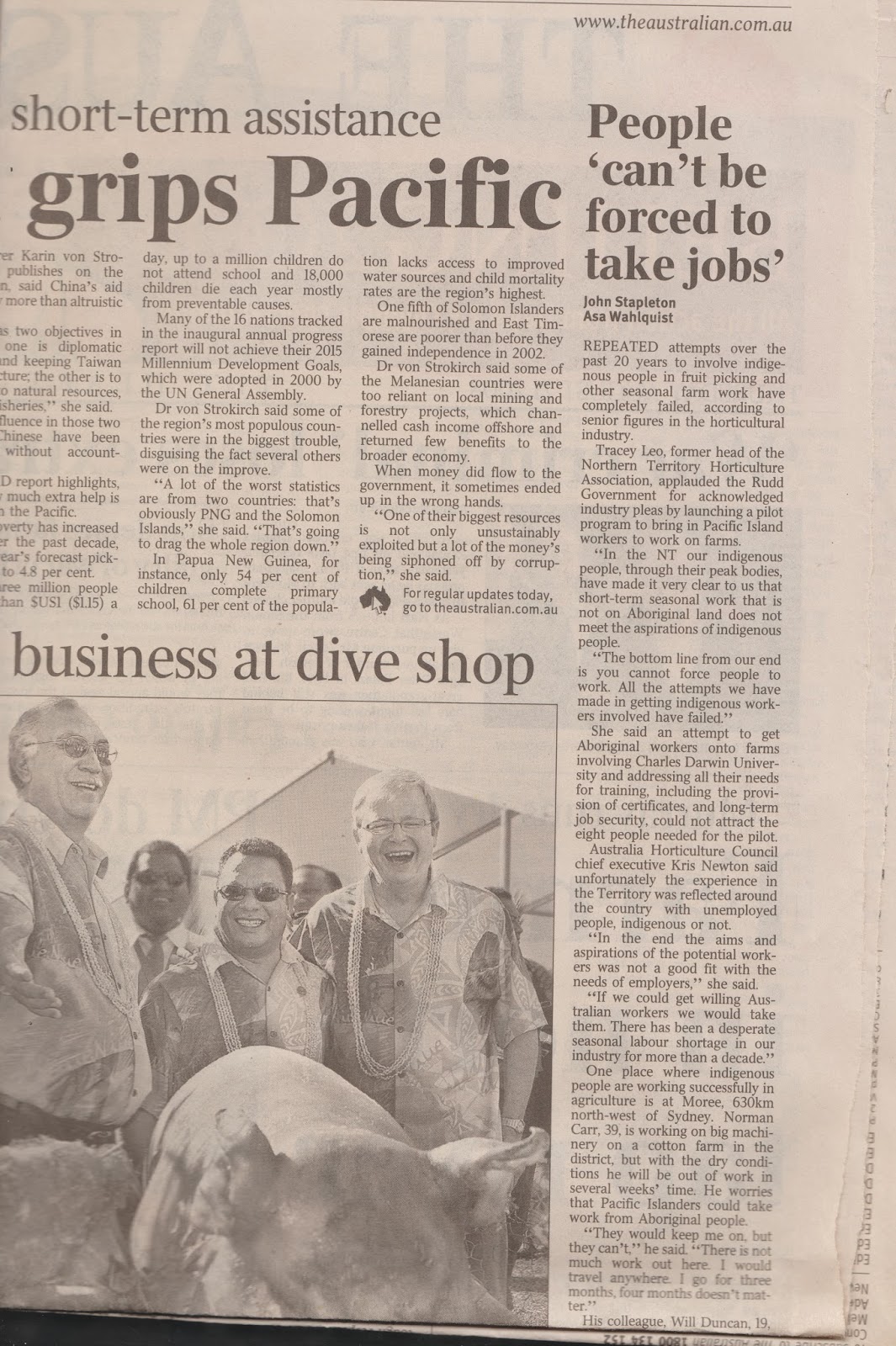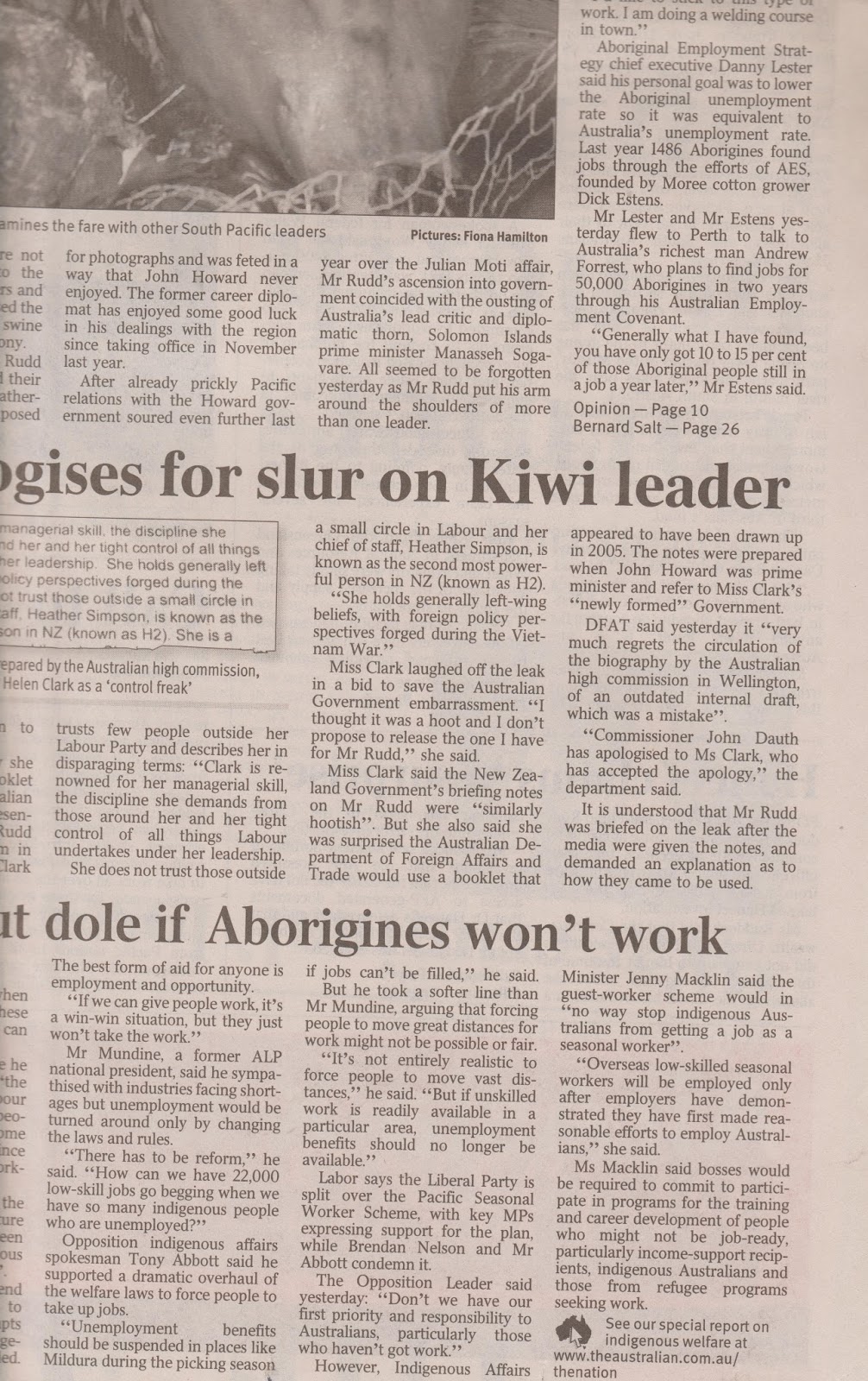People `can’t be forced to take jobs’
Stapleton, John. The Australian [Canberra, A.C.T] 21 Aug 2008: 2.
Show highlighting
Abstract
“They would keep me on, but they can’t,” he said. “There is not much work out here. I would travel anywhere. I go for three months, four months doesn’t matter.”
Aboriginal Employment Strategy chief executive Danny Lester said his personal goal was to lower the Aboriginal unemployment rate so it was equivalent to Australia’s unemployment rate. Last year 1486 Aborigines found jobs through the efforts of AES, founded by Moree cotton grower Dick Estens.
“Generally what I have found, you have only got 10 to 15 per cent of those Aboriginal people still in a job a year later,” Mr Estens said.
REPEATED attempts over the past 20 years to involve indigenous people in fruit picking and other seasonal farm work have completely failed, according to senior figures in the horticultural industry.
Tracey Leo, former head of the Northern Territory Horticulture Association, applauded the Rudd Government for acknowledged industry pleas by launching a pilot program to bring in Pacific Island workers to work on farms.
“In the NT our indigenous people, through their peak bodies, have made it very clear to us that short-term seasonal work that is not on Aboriginal land does not meet the aspirations of indigenous people.
“The bottom line from our end is you cannot force people to work. All the attempts we have made in getting indigenous workers involved have failed.”
She said an attempt to get Aboriginal workers onto farms involving Charles Darwin University and addressing all their needs for training, including the provision of certificates, and long-term job security, could not attract the eight people needed for the pilot.
Australia Horticulture Council chief executive Kris Newton said unfortunately the experience in the Territory was reflected around thecountry with unemployed people, indigenous or not.
“In the end the aims and aspirations of the potential workers was not a good fit with the needs of employers,” she said.
“If we could get willing Australian workers we would take them. There has been a desperate seasonal labour shortage in our industry for more than a decade.”
One place where indigenous people are working successfully in agriculture is at Moree, 630km north-west of Sydney. Norman Carr, 39, is working on big machinery on a cotton farm in the district, but with the dry conditions he will be out of work in several weeks’ time. He worries that Pacific Islanders could take work from Aboriginal people.
“They would keep me on, but they can’t,” he said. “There is not much work out here. I would travel anywhere. I go for three months, four months doesn’t matter.”
His colleague, Will Duncan, 19, has been working on cotton machinery for the past month. “I’d like to stick to this type of work. I am doing a welding course in town.”
Aboriginal Employment Strategy chief executive Danny Lester said his personal goal was to lower the Aboriginal unemployment rate so it was equivalent to Australia’s unemployment rate. Last year 1486 Aborigines found jobs through the efforts of AES, founded by Moree cotton grower Dick Estens.
Mr Lester and Mr Estens yesterday flew to Perth to talk to Australia’s richest man Andrew Forrest, who plans to find jobs for 50,000 Aborigines in two years through his Australian Employment Covenant.
“Generally what I have found, you have only got 10 to 15 per cent of those Aboriginal people still in a job a year later,” Mr Estens said.
Opinion — Page 10
Bernard Salt — Page 26
Credit: John Stapleton, Asa Wahlquist

